Abstract
An important element of behavioral research with nonhuman animals is that insights are drawn from it about human behavior, what is called here the human side of animal behavior. This article examines the origins of comparing human behavior to that of other animals, the ways in which such comparisons are described, and considerations that arise in evaluating the validity of those comparisons. The rationale for such an approach originated in the reductionism of experimental physiology and the understanding of the commonalities of all life forms promulgated by Darwinian evolutionary biology. Added more recently were such observations as the relative simplicity of animal behavior, tempered by the constraints placed on resulting comparisons by the absence of verbal behavior in animals. The construction of comparisons of human behavior to that of animals may be framed on the basis of Skinner's (1957) distinction between the metaphorical and generic forms of the extended tact. Both ordinary and systematic comparisons of animal and human behavior are congruent with Skinner's extended tact framework. The most general consideration in evaluating comparisons of animal and human behavior is that a functional basis for the claimed similarity be established. Systematic analysis and convergent evidence also may contribute to acceptability of these comparisons. In the final analysis, however, conclusions about the human side of animal behavior are nondeductively derived and often are assessed based on their heuristic and pragmatic value. Such conclusions represent a valuable contribution to understanding the human animal and in developing practical solutions to problems of human behavior to which much of psychology is dedicated.
Keywords: animal behavior, human behavior, extension, metaphor, model, analogue, simulation, extrapolation, generalization, evaluation
Full text
PDF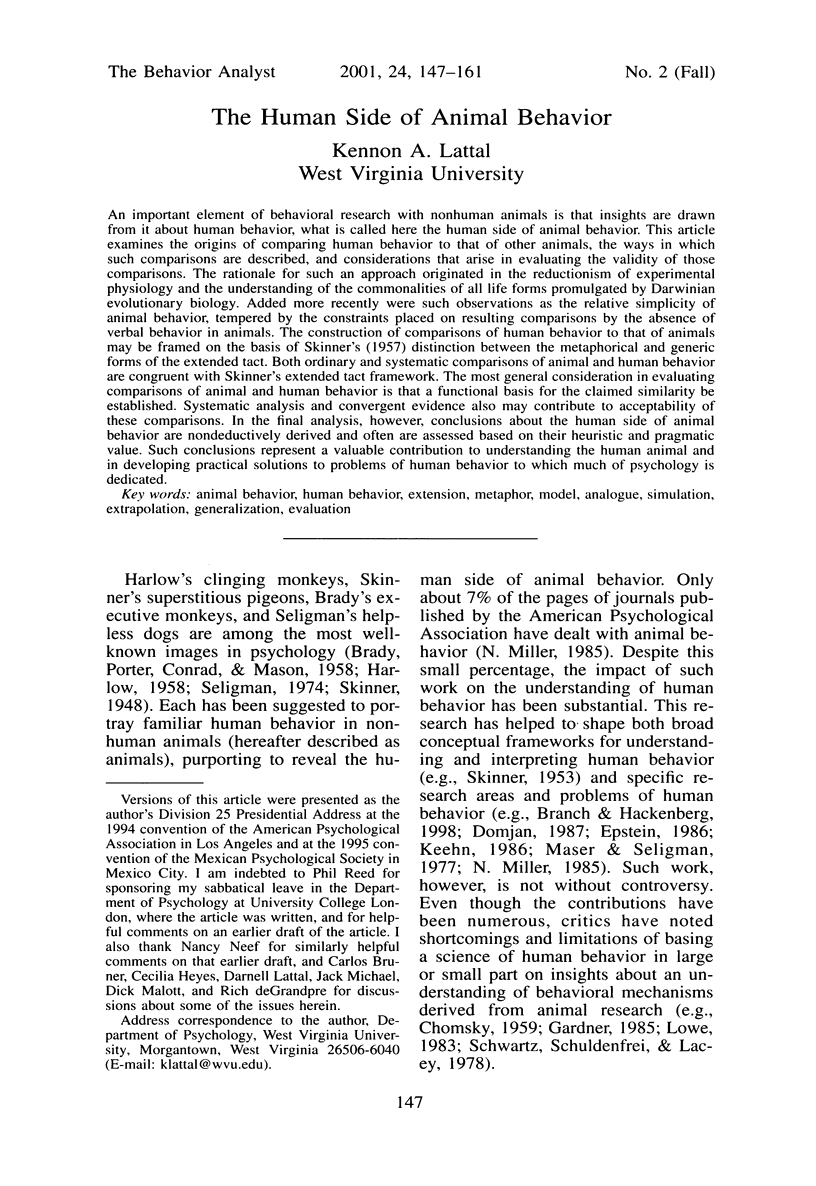
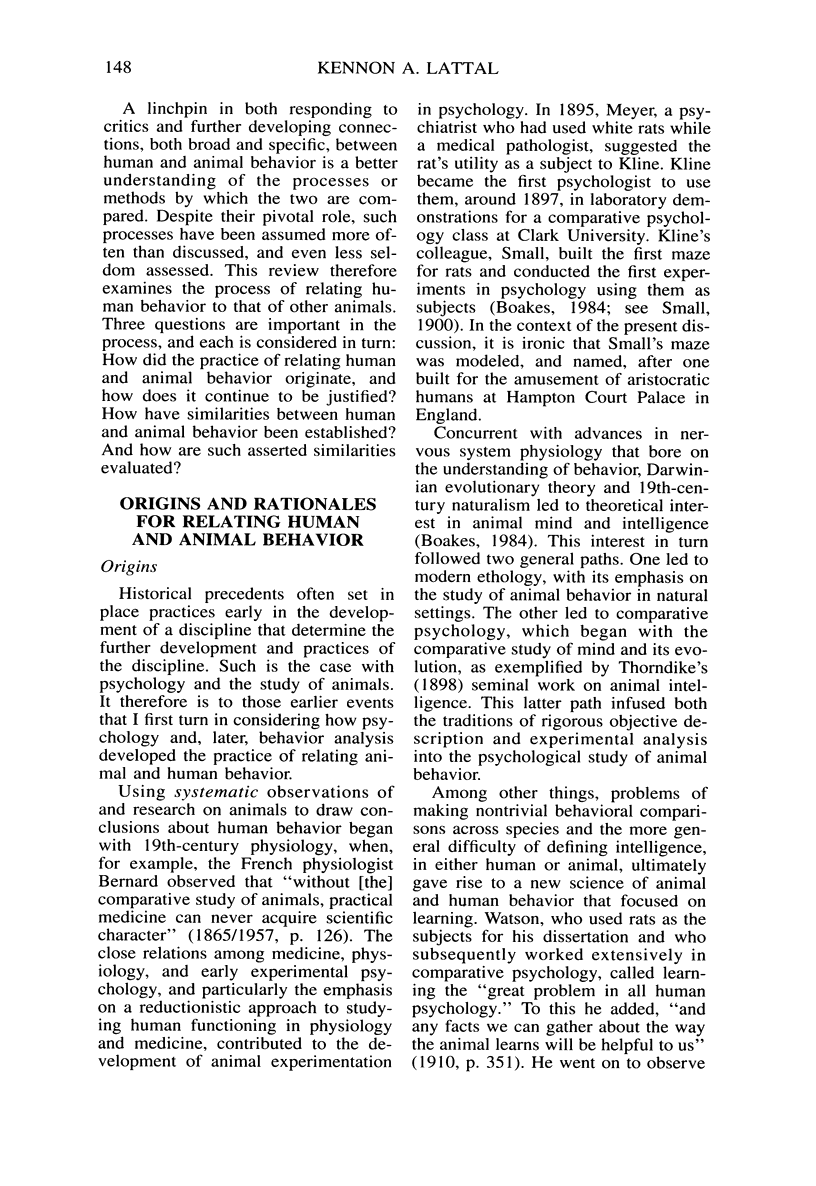
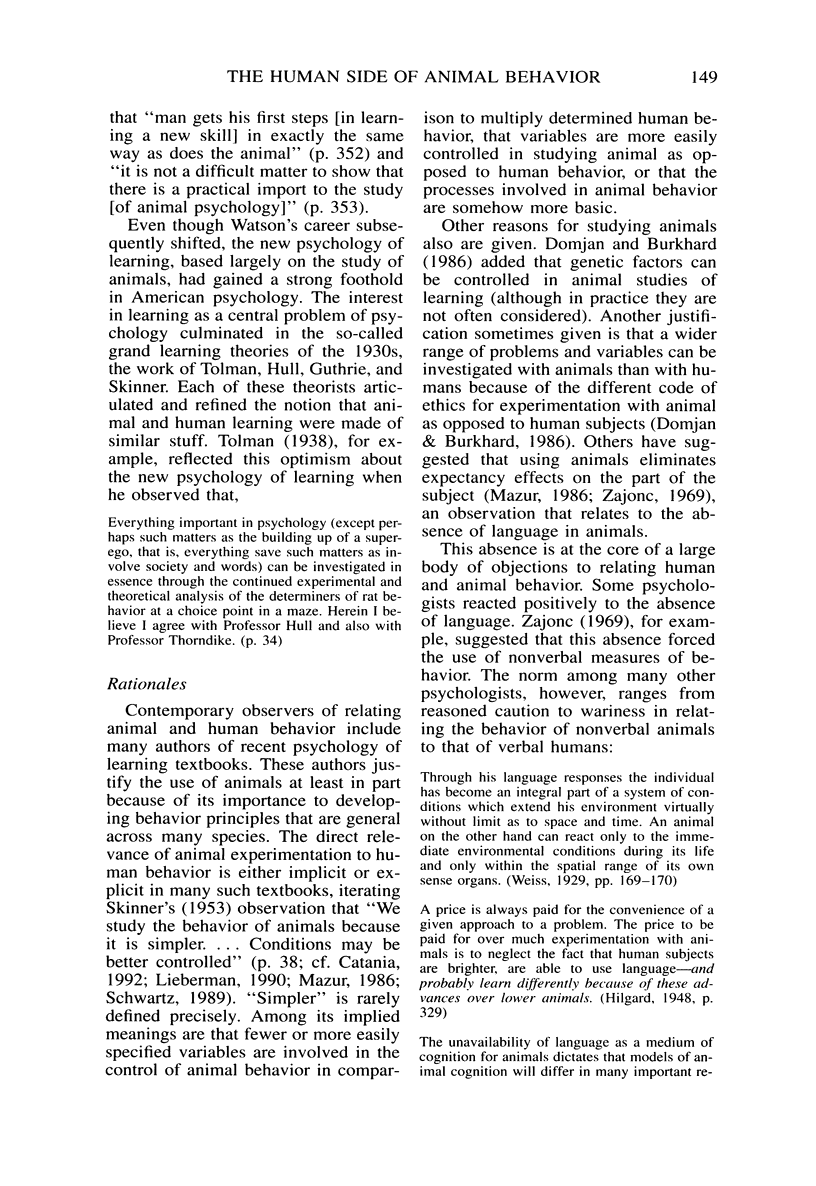
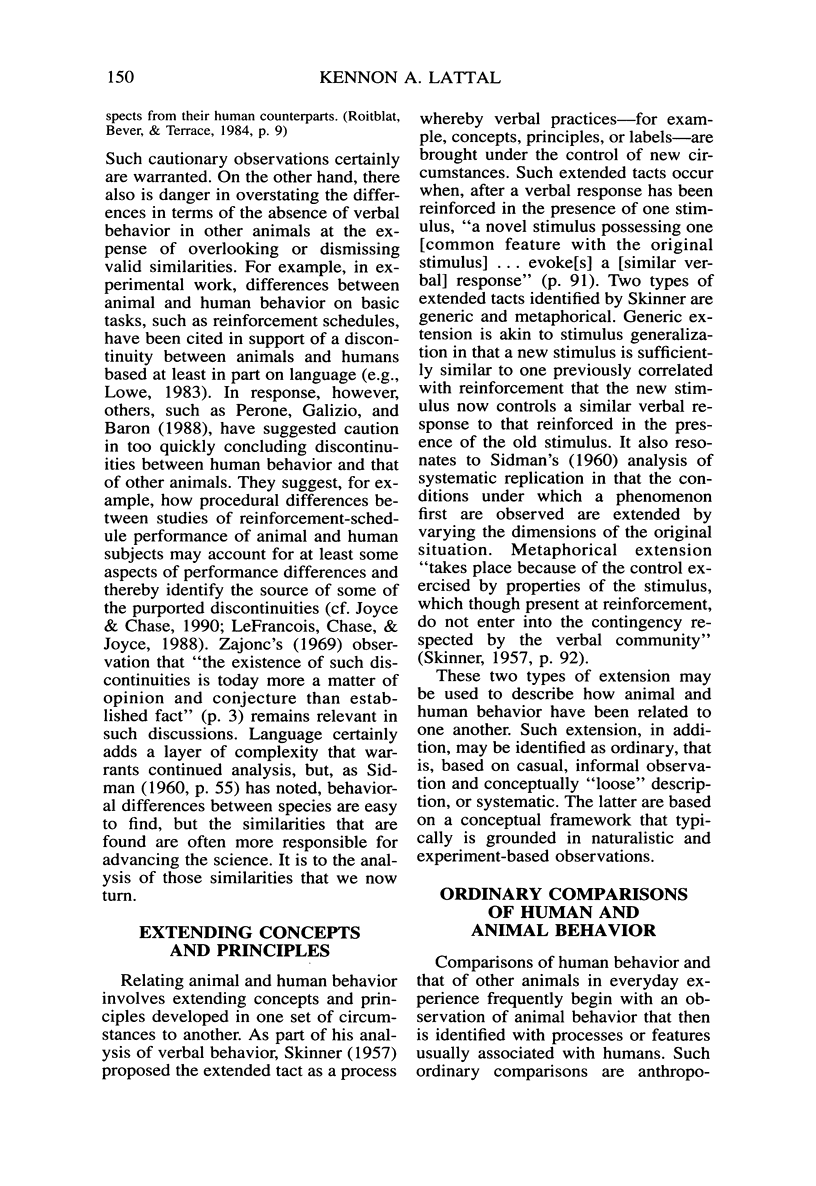
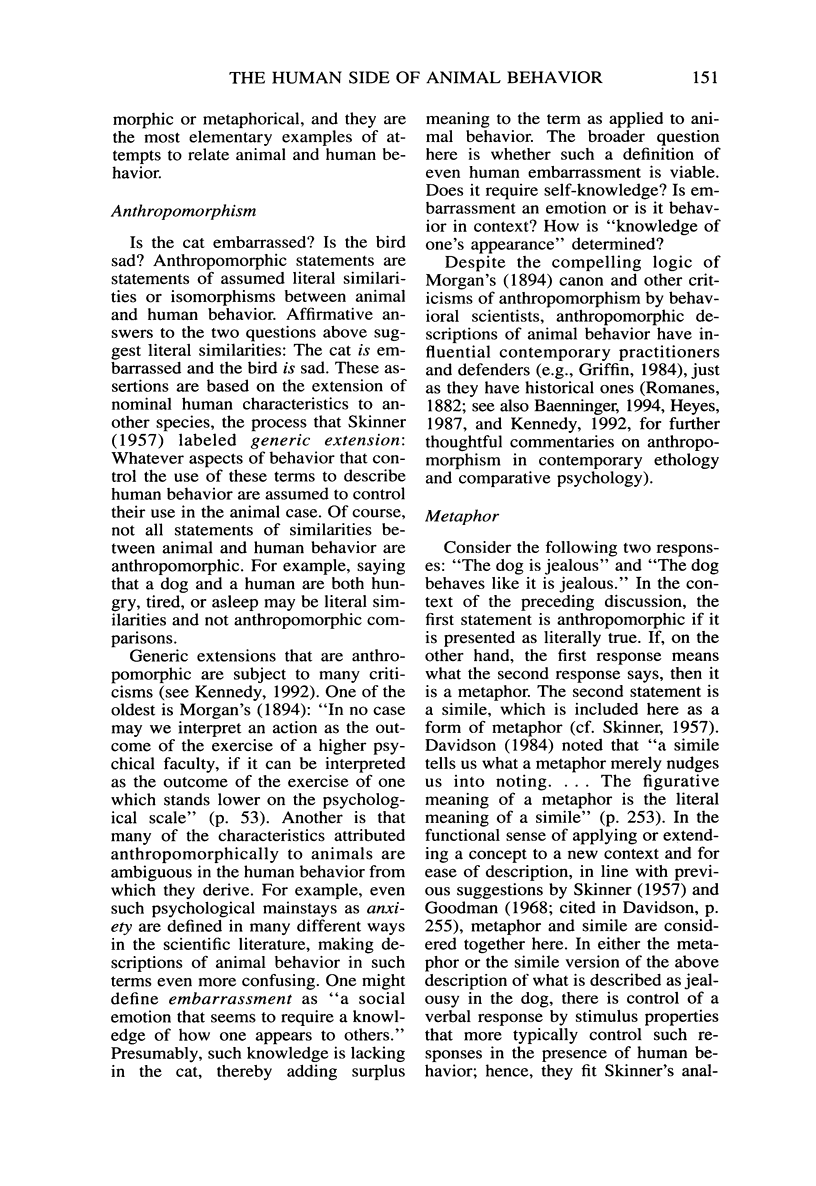
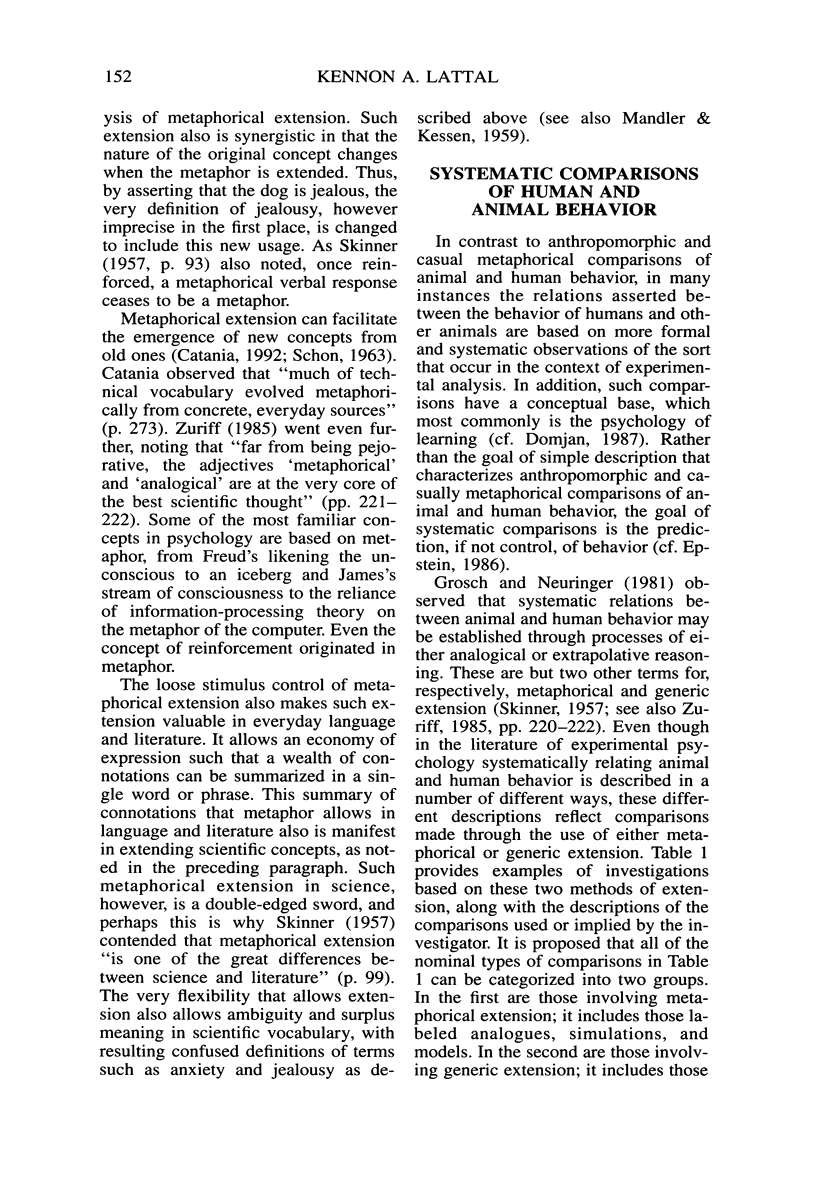
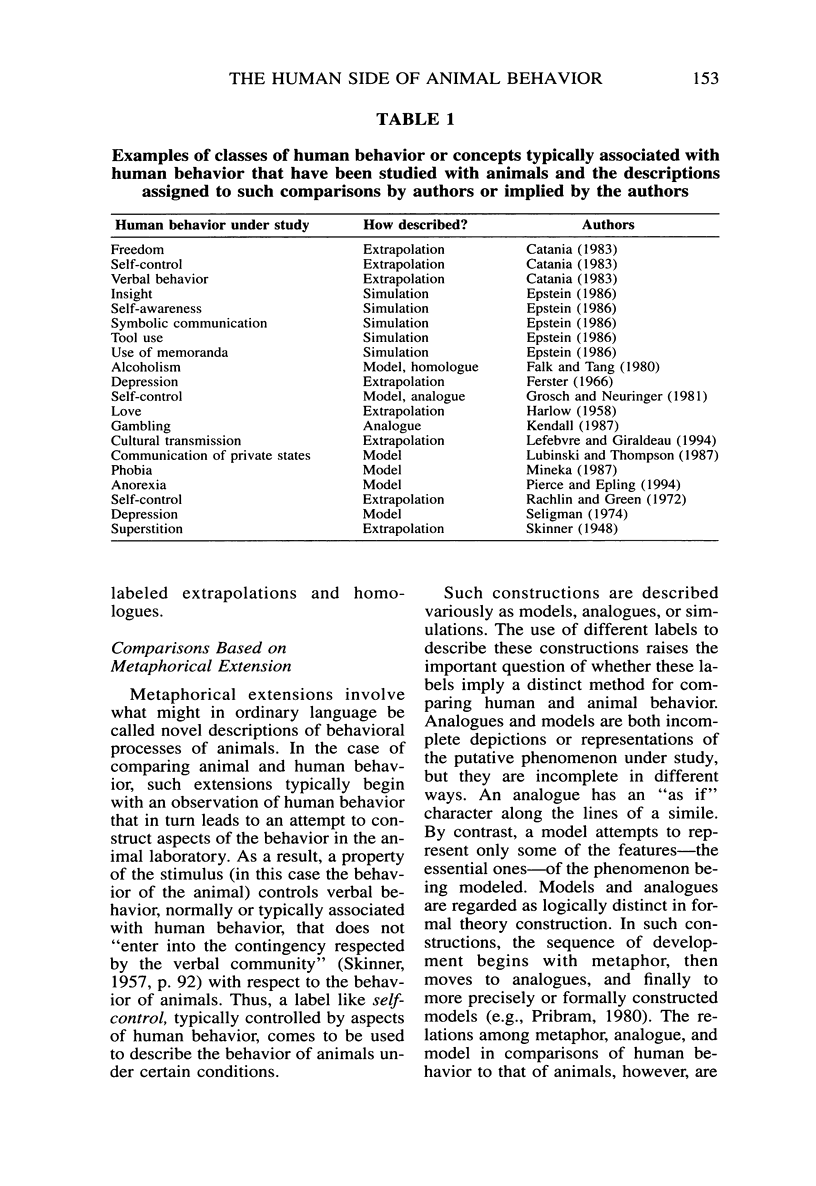
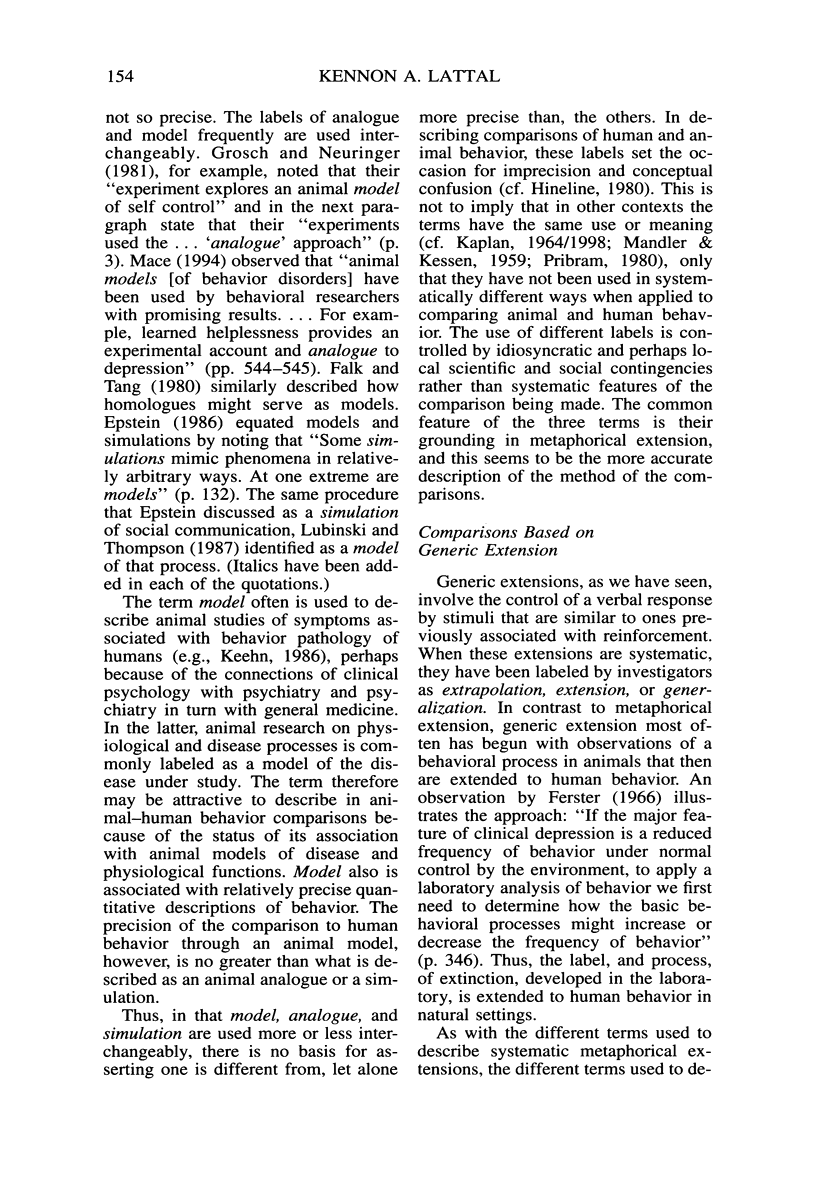
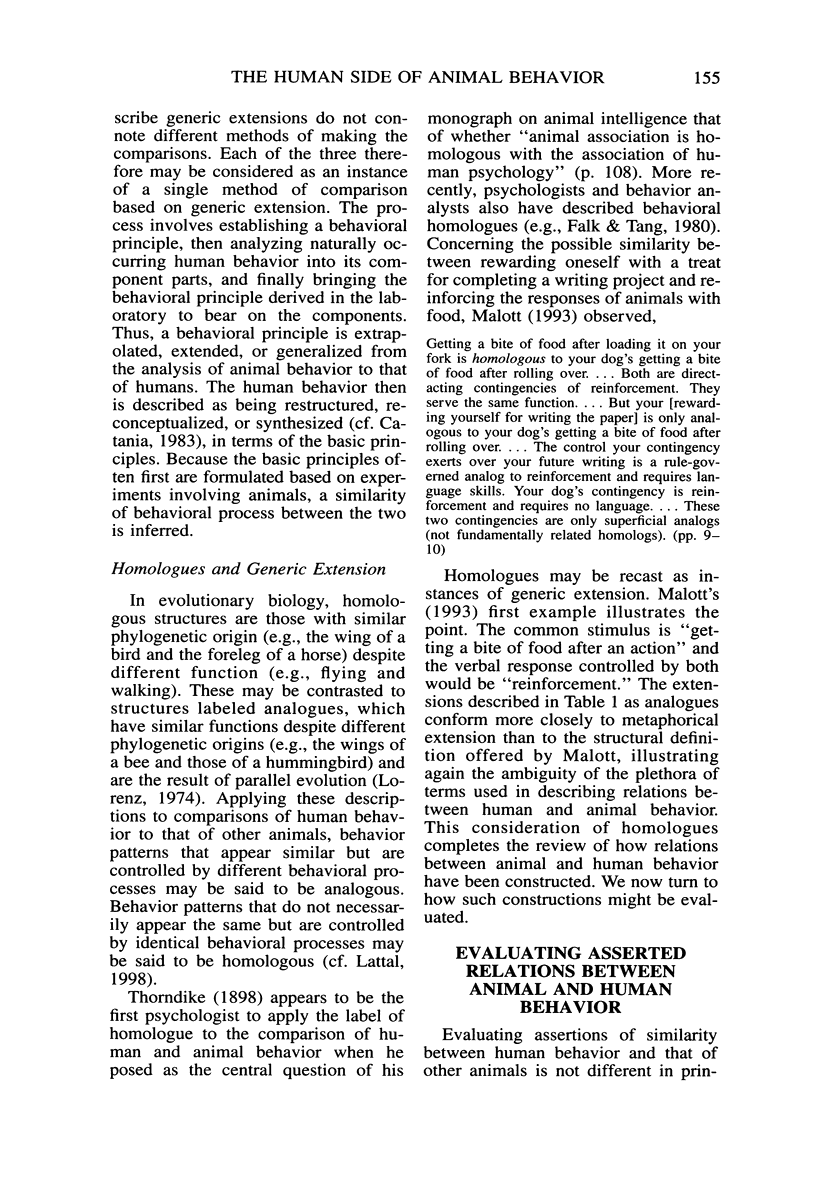
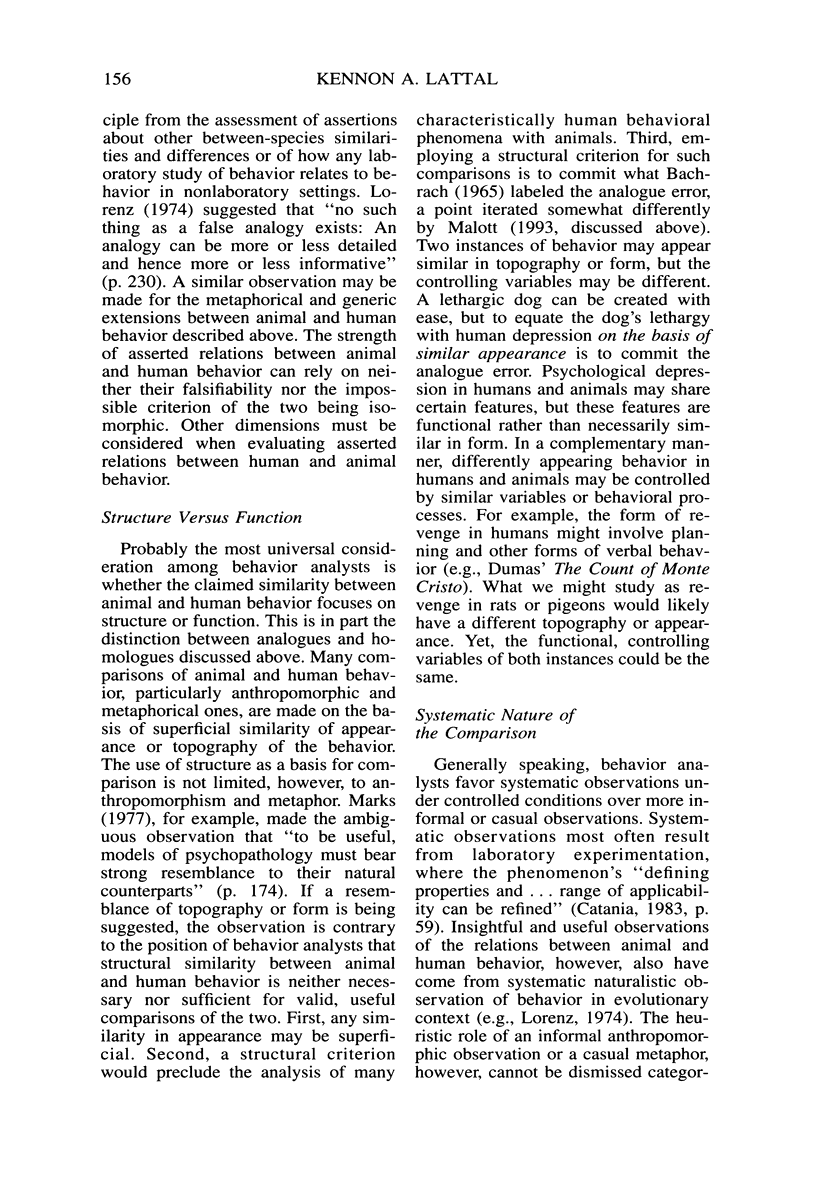
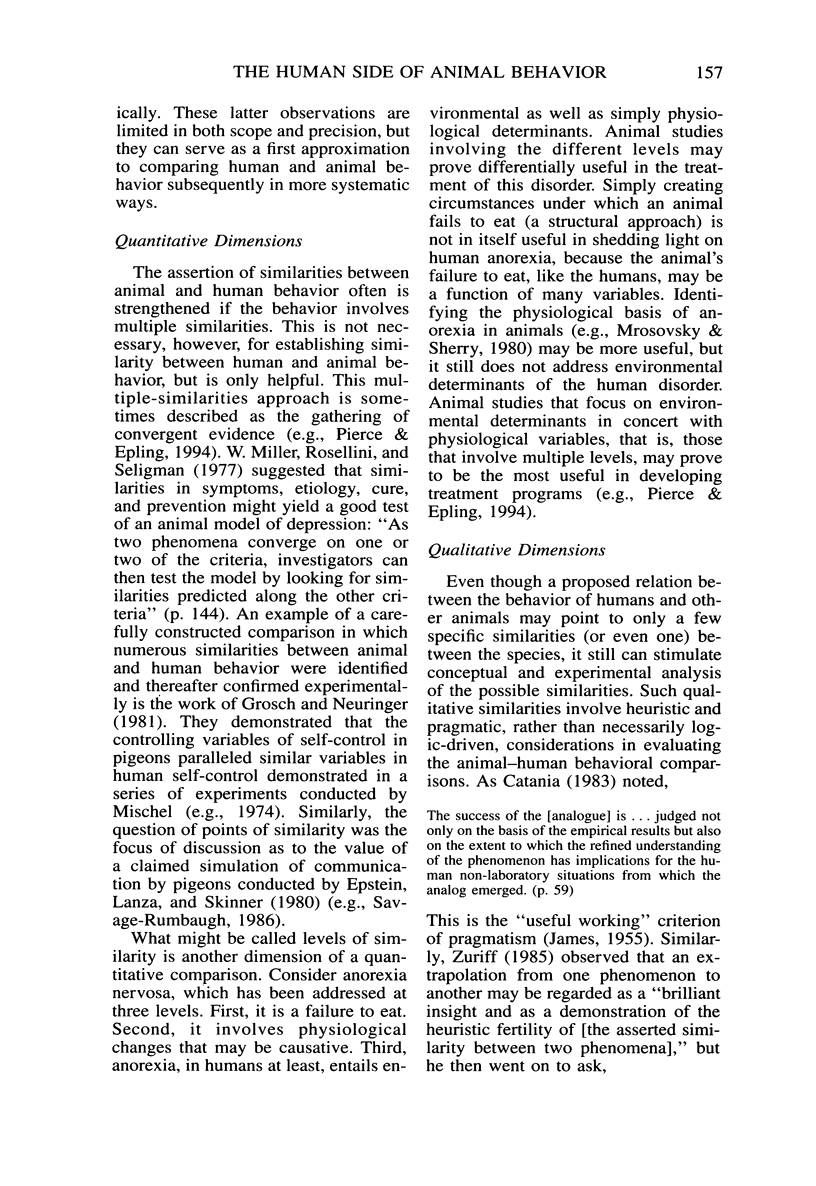
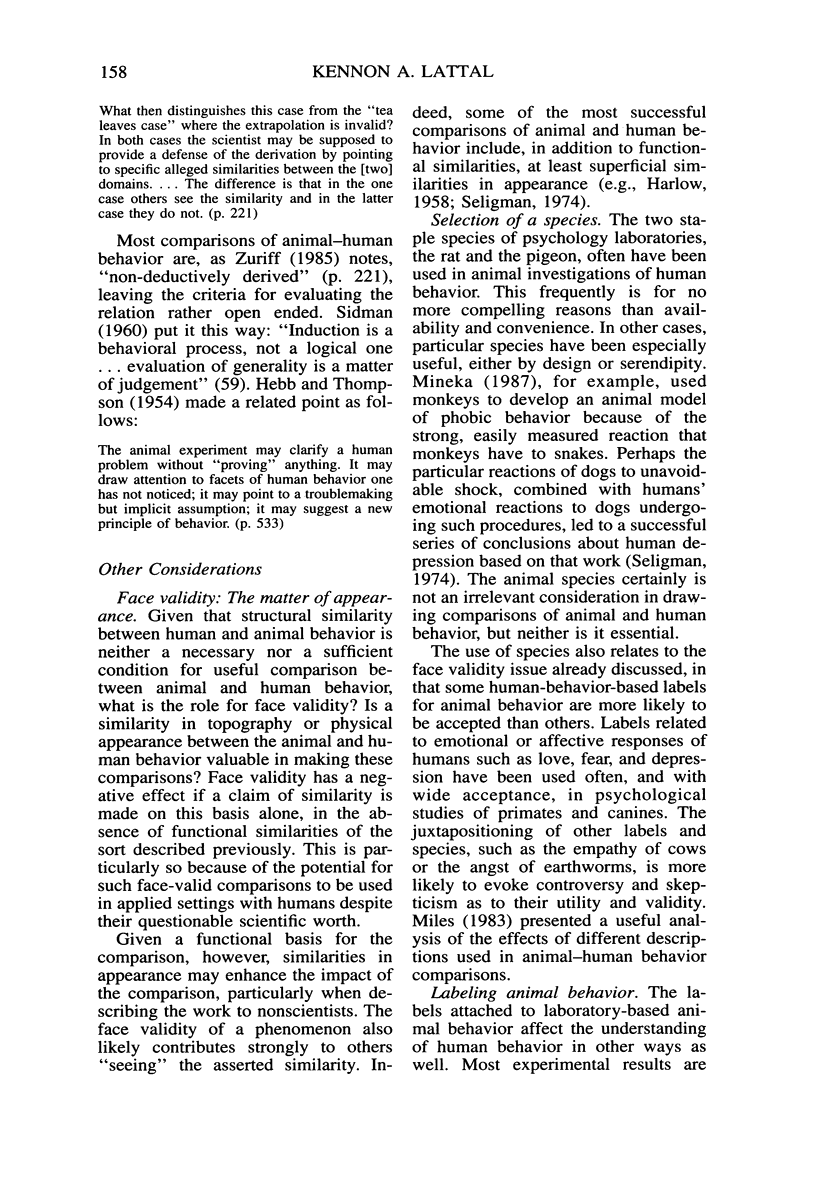
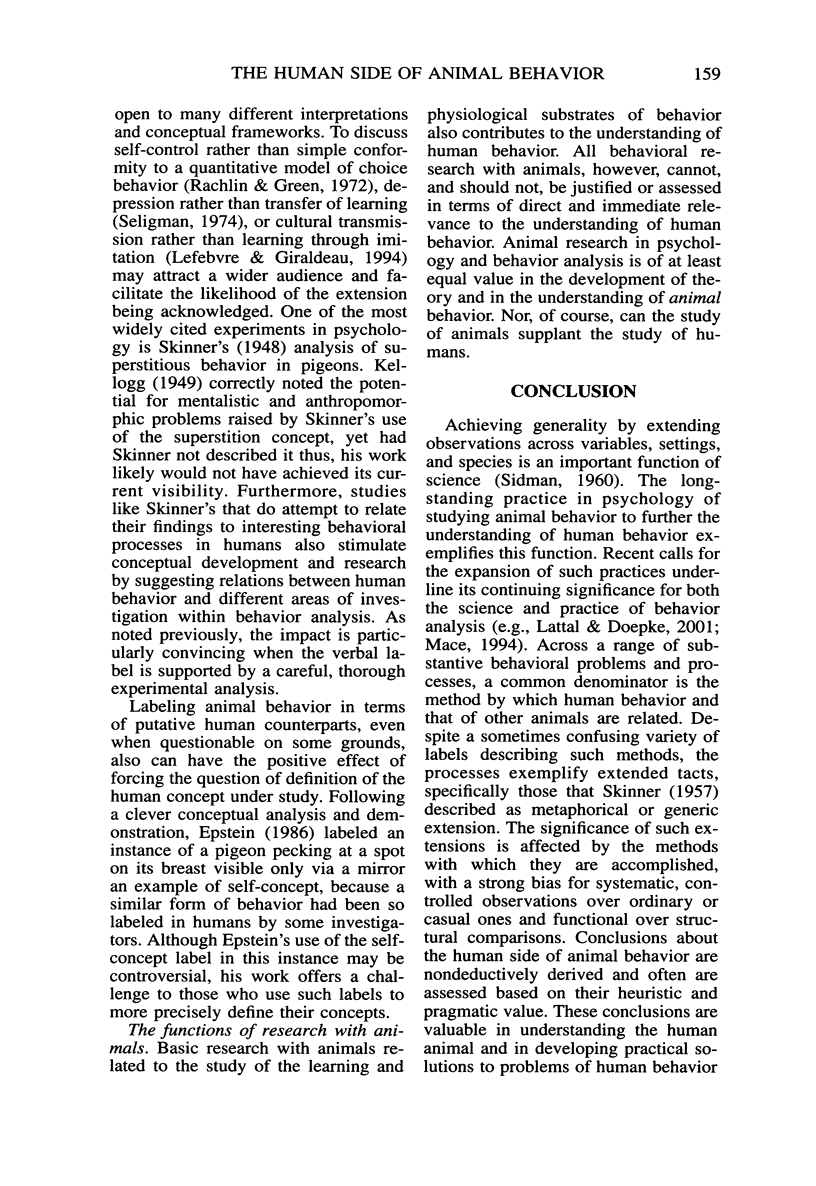
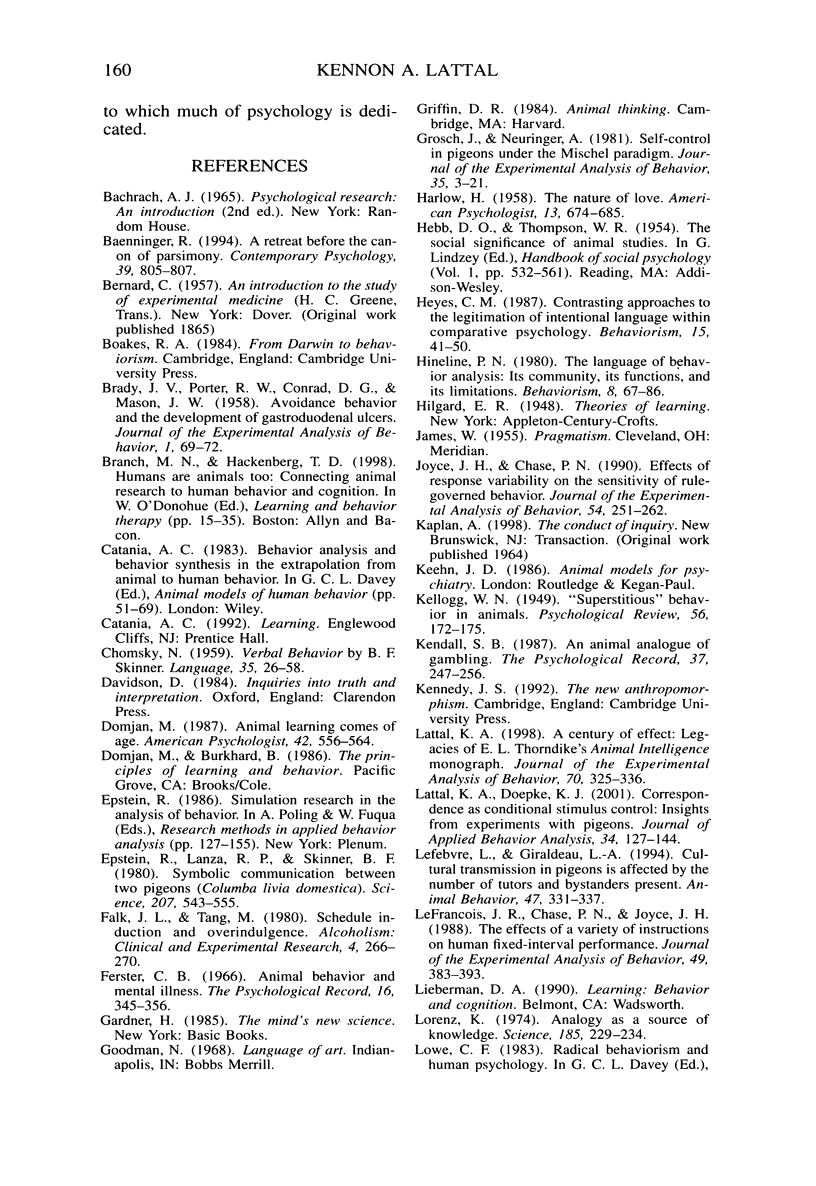
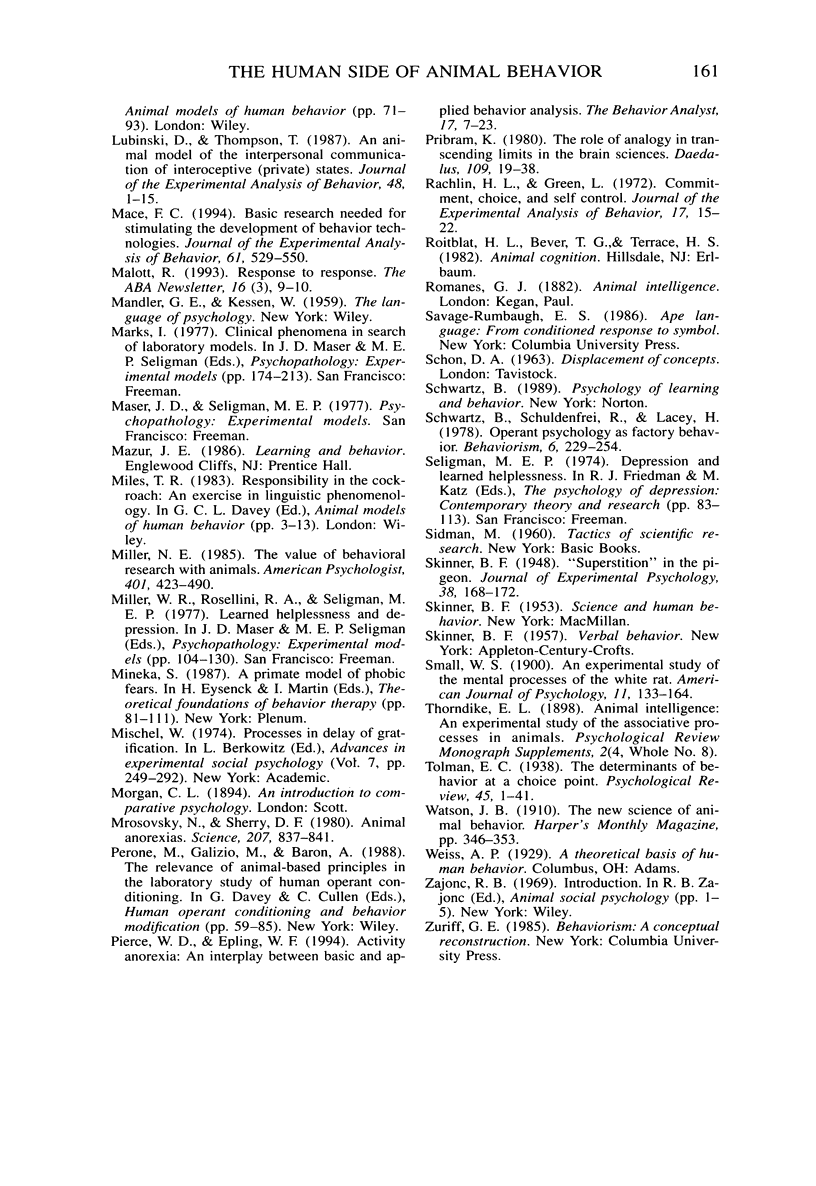
Selected References
These references are in PubMed. This may not be the complete list of references from this article.
- BRADY J. V., PORTER R. W., CONRAD D. G., MASON J. W. Avoidance behavior and the development of gastroduodenal ulcers. J Exp Anal Behav. 1958 Jan;1:69–72. doi: 10.1901/jeab.1958.1-69. [DOI] [PMC free article] [PubMed] [Google Scholar]
- Epstein R., Lanza R. P., Skinner B. F. Symbolic Communication Between Two Pigeons, (Columba livia domestica). Science. 1980 Feb 1;207(4430):543–545. doi: 10.1126/science.207.4430.543. [DOI] [PubMed] [Google Scholar]
- Grosch J., Neuringer A. Self-control in pigeons under the Mischel paradigm. J Exp Anal Behav. 1981 Jan;35(1):3–21. doi: 10.1901/jeab.1981.35-3. [DOI] [PMC free article] [PubMed] [Google Scholar]
- Joyce J. H., Chase P. N. Effects of response variability on the sensitivity of rule-governed behavior. J Exp Anal Behav. 1990 Nov;54(3):251–262. doi: 10.1901/jeab.1990.54-251. [DOI] [PMC free article] [PubMed] [Google Scholar]
- KELLOGG W. N. Superstitious behavior in animals. Psychol Rev. 1949 May;56(3):172–175. doi: 10.1037/h0055221. [DOI] [PubMed] [Google Scholar]
- Lattal K. A., Doepke K. J. Correspondence as conditional stimulus control: insights from experiments with pigeons. J Appl Behav Anal. 2001 Summer;34(2):127–144. doi: 10.1901/jaba.2001.34-127. [DOI] [PMC free article] [PubMed] [Google Scholar]
- Lattal K. A Century Of Effect: Legacies Of E. L. Thorndike's Animal Intelligence Monograph. J Exp Anal Behav. 1998 Nov;70(3):325–336. doi: 10.1901/jeab.1998.70-325. [DOI] [PMC free article] [PubMed] [Google Scholar]
- Lefrancois J. R., Chase P. N., Joyce J. H. The effects of a variety of instructions on human fixed-interval performance. J Exp Anal Behav. 1988 May;49(3):383–393. doi: 10.1901/jeab.1988.49-383. [DOI] [PMC free article] [PubMed] [Google Scholar]
- Lorenz K. Z. Analogy as a source of knowledge. Science. 1974 Jul 19;185(4147):229–234. doi: 10.1126/science.185.4147.229. [DOI] [PubMed] [Google Scholar]
- Lubinski D., Thompson T. An animal model of the interpersonal communication of interoceptive (private) states. J Exp Anal Behav. 1987 Jul;48(1):1–15. doi: 10.1901/jeab.1987.48-1. [DOI] [PMC free article] [PubMed] [Google Scholar]
- Mace F. C. Basic research needed for stimulating the development of behavioral technologies. J Exp Anal Behav. 1994 May;61(3):529–550. doi: 10.1901/jeab.1994.61-529. [DOI] [PMC free article] [PubMed] [Google Scholar]
- Miller N. E. The value of behavioral research on animals. Am Psychol. 1985 Apr;40(4):423–440. doi: 10.1037//0003-066x.40.4.423. [DOI] [PubMed] [Google Scholar]
- Mrosovsky N., Sherry D. F. Animal anorexias. Science. 1980 Feb 22;207(4433):837–842. doi: 10.1126/science.6928327. [DOI] [PubMed] [Google Scholar]
- Pierce W. D., Epling W. F., Dews P. B., Estes W. K., Morse W. H., Van Orman W., Herrnstein R. J. Activity anorexia: An interplay between basic and applied behavior analysis. Behav Anal. 1994 Spring;17(1):7–23. doi: 10.1007/BF03392649. [DOI] [PMC free article] [PubMed] [Google Scholar]
- Rachlin H., Green L. Commitment, choice and self-control. J Exp Anal Behav. 1972 Jan;17(1):15–22. doi: 10.1901/jeab.1972.17-15. [DOI] [PMC free article] [PubMed] [Google Scholar]
- SKINNER B. F. Superstition in the pigeon. J Exp Psychol. 1948 Apr;38(2):168–172. doi: 10.1037/h0055873. [DOI] [PubMed] [Google Scholar]


